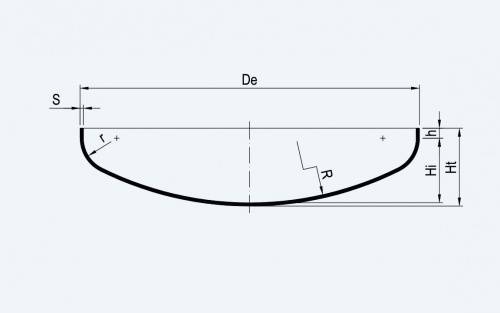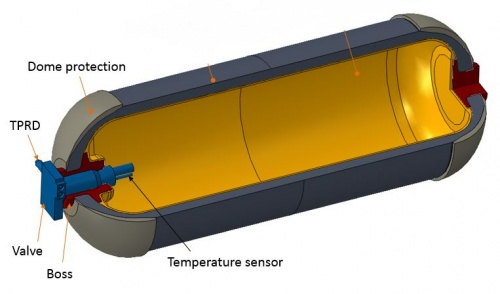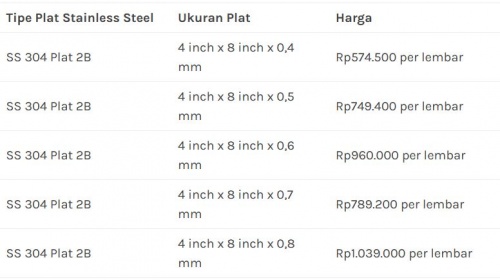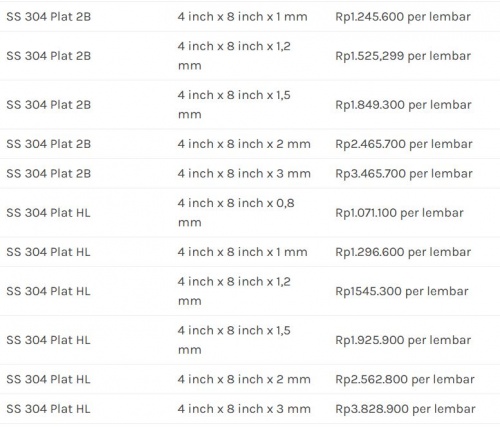Franklin Geri
Halooo, Nama Saya Franklin Geri biasa dipanggil Franklin, Kelahiran tahun 2002 namun kelihatan seperti 2006. Saya lahir di Jakarta tepatnya tanggal 28 Maret. Saya tinggal di Pondok Kopi, Jakarta Timur.
Contents
[hide]- 1 RESUME PERTEMUAN 1 (26/05/2023
- 2 Design and Optimization of Pressurized Hydrogen Storage System
- 3 Final Report of Design and Optimization of Pressurized Hydrogen Storage
RESUME PERTEMUAN 1 (26/05/2023
Pada pertemuan pertama dengan pak ahmad indra siswantara(DAI) kami diberi penjelasan tentang pengantar dalam mempelajari mata kuliah metode numerik. Pak Dai menekankan bahwa kita harus berusaha semaksimal mungkin daripada kita menyontek dan tidak tau arah materi tersebut. Pak DAI memberikan arahan mengenai pentingnya kesadaran dalam menyelesaikan suatu masalah. Diberikan pula study case berupa matematika dasar dimana jawabannya adalah undefined dan infinite. 0/0 merupakan bentuk tak tentu, oleh karena itu apa yang mendasari kita mengatakan bahwa ilmu pengetahuan bersifat eksak?. Pada dasarnya segala teori yang dibuat oleh manusia tidak dapat dibuktikan kebenarannya, semuanya hanyalah pendekatan untuk mempermudah kita dalam mengkonsumsi ilmu pengetahuan. Karna pada akhirnya, kebenaran hanya milik Tuhan Yang Maha Esa. Pak DAI juga menjelaskan perbedaan mengenai ilmu pengetahuan dan ilmu agama, dimana pada dasarnya keduanya bernilai sama. Namun, perlu diingat bahwa ilmu pengetahuan adalah buatan manusia sedangkan agama berasal dari Tuhan. Kami juga diberikan Tugas untuk membuat desain tabung hidrogen dengan optimum, volum tabung 1 liter, dengan tekanan 8? desain dengan batasan harga tidak boleh lebih dari 500 ribu, Tabung hidrogen ini nantinya dipergunakan untuk mencampur dengan bahan bakar di motor agar lebih irit.
Hal yang paling penting oleh pak DAI adalah realitas, dimana jika kita tidak merasakan dampaknya, pasti kita akan lupa. lalu pak DAI menjelaskan tentang chatGPT dimana kita harus bisa membuat pertanyaan sebaik mungkin ke sistem tersebut. lalu dilanjutkan dengan pembahasan mengenai dasar pemikiran dan kepercayaan yang kita anut, menjelaskan tentang qbit atu quantum bit, lalu kita diberikn pertanyaan mengenai pembagian dan pengurangan dan diminta menjelaskan mengapa memilih jawaban tersebut, atas dasar apa dan kenapa?.
Kesadaran dalam belajar sangat penting karena itu melibatkan pemahaman dan kesadaran diri terhadap proses pembelajaran.Lantas mengapa consciousness menjadi hal yang sangat penting dalam proses pembelajaran? berikut beberapa poin yang sudah saya rangkum :
1.Pemahaman diri: Kesadaran dalam belajar membantu kita memahami kekuatan dan kelemahan kita sebagai pembelajar. Dengan mengetahui cara terbaik dalam belajar, kita dapat mengembangkan strategi yang efektif dan efisien untuk meningkatkan keterampilan belajar kita.
2.Fokus dan perhatian: Kesadaran dalam belajar membantu kita tetap fokus dan berada dalam saat ini saat kita belajar. Dengan menghilangkan gangguan dan meningkatkan konsentrasi, kita dapat memperoleh pemahaman yang lebih baik tentang materi dan mengingat informasi dengan lebih baik.
3.Pencapaian tujuan: Kesadaran diri tentang apa yang ingin kita capai dalam belajar membantu Anda menetapkan tujuan yang jelas dan terarah. Dengan memiliki kesadaran ini, kita dapat merencanakan langkah-langkah yang diperlukan untuk mencapai tujuan tersebut, mengukur kemajuan, dan membuat perubahan jika diperlukan.
Design and Optimization of Pressurized Hydrogen Storage System
Specifications of Hydrogen Storage :
- Volume : 1 Liter
- Pressure : 8 bar
- Cost : < Rp500.000
Abstract
Hydrogen is a clean energy source with the potential to replace fossil fuels. Hydrogen has emerged as an intriguing alternative fuel in efforts to reduce greenhouse gas emissions and dependence on fossil fuels.However, efficient and safe storage of hydrogen remains a significant challenge. This research aims to address this challenge by designing and optimizing pressurized hydrogen storage systems.
Through an extensive literature review, this study explores the current concepts and technologies related to the design and optimization of pressurized hydrogen storage systems. Key parameters such as storage capacity, working pressure, tank materials, and safety considerations are analyzed. Additionally, factors like weight, size, cost, and energy efficiency are taken into account during the design process.
The findings of this research highlight the importance of designing and optimizing pressurized hydrogen storage systems for improved efficiency and safety. By considering various factors and incorporating cutting-edge technologies, the storage capacity and performance of hydrogen storage systems can be enhanced. However, challenges such as production costs and infrastructure development need to be addressed for widespread implementation.
Introduction
The design and optimization of pressurized hydrogen storage systems play a crucial role in the efficient and safe utilization of hydrogen as an alternative energy source. Hydrogen has gained significant attention as a clean and sustainable fuel that can potentially replace conventional fossil fuels. However, the successful integration of hydrogen into various industries and applications requires effective storage solutions.
Pressurized hydrogen storage systems have emerged as a common method for storing hydrogen. These systems utilize high-pressure tanks to store hydrogen gas, allowing for compact storage and maximizing the energy density of hydrogen. However, the design and optimization of these storage systems require careful consideration of various factors, including safety, efficiency, capacity, and cost-effectiveness.
The primary objective of this research is to explore the design and optimization of pressurized hydrogen storage systems to enhance their performance and ensure safe operations. By studying the existing literature and considering the latest technological advancements, this research aims to identify key parameters and design considerations necessary for developing efficient and reliable storage systems.
The design process involves analyzing various factors, such as the storage capacity required, the working pressure of the system, the materials used for the storage tanks, and the safety measures implemented. Additionally, factors like weight, size, cost, and energy efficiency are considered during the optimization phase to ensure practicality and economic viability.
Methodology
In this study, a comprehensive literature review was conducted to understand the current concepts and technologies in the design and optimization of pressurized hydrogen storage systems. Key parameters such as storage capacity, working pressure, tank materials, and safety were analyzed. Factors such as weight, size, cost, and energy efficiency were also considered in designing an optimal system.
Results
When it comes to hydrogen storage, various materials can be considered based on their properties and suitability for different storage methods. Here are some commonly used materials for hydrogen storage:
1. Compressed Gas Storage:
Type I: High-strength steel cylinders are commonly used for storing hydrogen gas under high pressure. These cylinders have good durability, high pressure resistance, and are widely available.
Type II: Aluminum-lined, steel-reinforced cylinders offer reduced weight compared to Type I cylinders while maintaining high-pressure capabilities.
Type III: Composite cylinders, typically made of carbon fiber reinforced with epoxy, provide lightweight storage options with good strength and pressure resistance.
2.Liquid Hydrogen Storage:
Cryogenic Tanks: Specialized tanks designed to store hydrogen in its liquid form at extremely low temperatures (-253°C). These tanks are typically made of materials like stainless steel or aluminum alloys with excellent low-temperature properties.
3. Chemical Hydrides:
Metal Hydrides: Certain metals, such as magnesium or lithium, can absorb hydrogen gas and form metal hydrides. These metal hydrides can release hydrogen when heated or exposed to certain conditions.
Complex Hydrides: Compounds like sodium borohydride (NaBH4) or ammonia borane (NH3BH3) can store hydrogen through chemical reactions. Hydrogen can be released from these compounds by adding a catalyst or applying heat.
4. Carbon-based Materials:
Carbon Nanotubes (CNTs): CNTs can adsorb hydrogen molecules on their surfaces, providing potential storage capabilities. However, further research is needed to improve their efficiency and address challenges related to cost and practical implementation.
Metal-Organic Frameworks (MOFs): MOFs are highly porous materials that can adsorb hydrogen gas, offering a promising storage option. The structure and chemical properties of MOFs can be tailored to enhance hydrogen storage capacity.
A thorough evaluation of various materials commonly used for hydrogen storage, such as high-strength steel alloys, carbon fiber composites, and polymer-lined tanks, was conducted. Factors considered during the evaluation included material properties (e.g., strength, corrosion resistance, and permeation), compatibility with hydrogen gas, manufacturing feasibility, and cost.
Based on the evaluation, a set of selection criteria was established to identify the most suitable material for the pressurized hydrogen storage system. The criteria encompassed safety, performance, cost-effectiveness, manufacturability, and availability.
A detailed analysis of the shortlisted materials was carried out, taking into account their individual merits and drawbacks. The analysis involved assessing the materials' ability to withstand the required pressure, their compatibility with hydrogen, weight considerations, manufacturability, and cost implications.
With the considerations mentioned above. the material chosen in the design of pressurized Hydrogen Storage System is :
'''Type I: High-strength steel '''
Safety measures are crucial when designing and operating a hydrogen storage system to ensure the safe handling, storage, and utilization of hydrogen. Here are some important safety considerations for hydrogen storage: 1. Ventilation and Gas Detection
2. Pressure Relief Devices
3. Hydrogen Leak Detection
4. Fire Safety
5. Regulatory Compliance.
When designing a hydrogen storage system, selecting appropriate valves and fittings is crucial for ensuring safe and efficient operation. Here are some considerations for valves and fittings in hydrogen storage:
Material Compatibility: Choose valves and fittings made from materials that are compatible with hydrogen gas, such as stainless steel, brass, or specific hydrogen-compatible polymers. Avoid materials that can react with hydrogen or become brittle under hydrogen exposure, such as certain types of aluminum alloys.
Pressure Rating:Select valves and fittings with pressure ratings that can withstand the maximum operating pressure of the storage system.Ensure that the pressure rating exceeds the intended operating pressure to provide a safety margin.
Leak-Tight Design:Use valves and fittings that provide reliable leak-tight connections to prevent hydrogen gas leakage.Consider options such as compression fittings, flare fittings, or double ferrule fittings that provide secure seals.
Hydrogen-Specific Features:Look for valves and fittings designed specifically for hydrogen applications, which may include features such as hydrogen-compatible seals, stem packing, or internal venting.
Valve Types:Choose valve types suitable for the intended function, such as isolation valves, pressure relief valves, check valves, or control valves. Ensure that valves are easily operable, provide smooth flow control, and have appropriate flow capacity for the system requirements.
Fitting Types: Select fittings that allow for easy installation, disassembly, and maintenance of the hydrogen storage system. Common fitting types include threaded fittings, compression fittings, flare fittings, or quick-connect fittings.
Conclusion
Storage Method : Compressed Gas Storage
This design utilizes high-pressure cylinders to store hydrogen gas.
Tank Selection:Choose high-strength steel cylinders or lightweight composite cylinders made of carbon fiber or other suitable materials. Consider the desired volume of 1 liter and the operating pressure of 8 bar.
Tank Dimensions: cylindrical tank design, consider a diameter of approximately 10 cm and a height of 20 cm to achieve a 1-liter volume. Ensure that the chosen tank material can withstand the operating pressure of 8 bar, taking into account safety margins and appropriate wall thickness.
Safety Measures: Install pressure relief valves on each cylinder to prevent over-pressurization and ensure safe operation. Implement burst discs as an additional safety measure to relieve excess pressure in case of emergencies.
Valves and Fittings : Include high-quality valves, fittings, and pressure gauges compatible with hydrogen gas to facilitate proper filling, discharging, and monitoring of the storage system.
System Integration: Integrate the storage system with other components of the hydrogen infrastructure, such as production, purification, and utilization systems, as required.
This research demonstrates that the design and optimization of pressurized hydrogen storage systems can improve the efficiency and safety of hydrogen utilization as an alternative fuel. By considering factors such as storage capacity, working pressure, and safety, hydrogen storage systems can be efficiently and optimally designed. However, further research is still needed to address challenges such as production costs and required infrastructure.
References
[OurFuture.Energy]. (2019, June 27). How It Works: Hydrogen Storage [Video]. Youtube.com. https://www.youtube.com/watch?v=oS32_r4MM94
Final Report of Design and Optimization of Pressurized Hydrogen Storage
Requirements
- The specific requirements are 1 liter (1000 cm^3) of Hydrogen with 8 bar (800 kPa) Pressure with a maximum cost of Rp 500.000
Material Selection
- By carefully considering the materials available for pressurized hydrogen storage, our selection has led us to choose AISI 304 austenitic stainless steel. This decision is rooted in the unique properties and advantages offered by this particular material. Here are some reasons for considering AISI 304 stainless steel for pressurized hydrogen storage:
- 1) Corrosion Resistance
- Hydrogen can cause embrittlement and corrosion in some materials, leading to reduced structural integrity and potential safety hazards. AISI 304 stainless steel offers superior corrosion resistance, particularly in environments with high levels of hydrogen. This property helps ensure the long-term durability and safety of the storage system.
- 2) Strength and Pressure Resistance
- Pressurized hydrogen storage systems require materials with high strength to withstand the internal pressure. AISI 304 stainless steel possesses good mechanical properties, including high tensile strength and yield strength, allowing it to withstand the required pressure levels while maintaining structural integrity.
- 3) Compatibility with Hydrogen
- AISI 304 stainless steel has demonstrated compatibility with hydrogen gas in various studies and practical applications. It exhibits low permeability to hydrogen, reducing the risk of hydrogen loss and ensuring efficient containment within the storage system.
- 4) Established Industrial Usage
- AISI 304 stainless steel is widely used in various industries, including chemical processing, oil and gas, and marine applications. It has a well-established track record and extensive knowledge base regarding its behavior in different environments, making it a trusted material choice for engineering applications.
Constraints
- Pressurized hydrogen storage plays a crucial role in various applications, ranging from energy storage to fuel cell technology. Designing an optimized storage system requires careful consideration of multiple factors to ensure efficiency, safety, and cost-effectiveness. In this context, incorporating three key constraints - geometrical, material strength, and budget constraints - forms the foundation of an effective optimization model.
- 1) Geometrical Constraint
- The geometrical constraint ensures that the design of the storage system meets specific volume requirements. By setting a constraint on the volume or dimensions of the storage tank, you can optimize the geometrical parameters such as radius and height to ensure the tank can accommodate the desired volume of 1 liter (1000 cm^3). This constraint ensures that the storage tank is appropriately sized and fits within the available space.
- 2) Material Strength Constraint
- The material strength constraint focuses on selecting a material that can withstand the high-pressure environment of the hydrogen storage system. Hydrogen is stored under high pressure (8 bar or 800 kPa), and selecting a material with appropriate strength characteristics is crucial for the safety and integrity of the storage system. By incorporating this constraint, you ensure that the selected material, such as AISI 316 austenitic stainless steel, possesses the necessary mechanical properties to withstand the pressure and prevent any material failures or leaks.
- 3) Budget Constraint
- The budget constraint places a limitation on the cost of the pressurized hydrogen storage system. By including this constraint, you ensure that the optimization model considers the cost-effectiveness of the design. The budget constraint helps in selecting cost-efficient materials and optimizing the geometrical parameters to meet the required specifications while staying within the allocated budget of Rp 500.000. This constraint ensures that the final design is financially feasible and aligns with the available resources.
Geometrical Constraints
- The code provided utilizes an optimization algorithm implemented in Python, utilizing the powerful capabilities of the NumPy and SciPy libraries. The objective of the code is to determine the optimal values for the radius and height of the storage tank by minimizing the surface area, while considering the specified volume of hydrogen. The incorporation of NumPy allows for efficient mathematical operations and array manipulation, while SciPy provides advanced optimization techniques and algorithms
Base Geometry
import numpy as np
from scipy.optimize import minimize
# Define the objective function
def objective(x):
radius, height = x
surface_area = 2 * np.pi * radius * (radius + height)
return surface_area
# Define the volume constraint function
def volume_constraint(x):
radius, height = x
volume = np.pi * radius**2 * height
return volume - 1000
# Define the optimization problem
x0 = [1.0, 10.0]
bounds = [(0, None), (0, None)]
constraint = {'type': 'eq', 'fun': volume_constraint}
problem = minimize(objective, x0, bounds=bounds, constraints=constraint)
# Extract the optimized results
optimized_radius = problem.x[0]
optimized_height = problem.x[1]
optimized_surface_area = problem.fun
# Print the optimized results
print("Optimization Results:")
print(f"Radius: {optimized_radius:.2f} cm")
print(f"Height: {optimized_height:.2f} cm")
print(f"Surface Area: {optimized_surface_area:.2f} cm^2")- From the coding results, it can be inferred that by minimizing the surface area, the optimal dimensions for the cylindrical tank are achieved with a height-to-radius ratio of 2:1. Specifically, the tank has a height of 10.84 cm and a radius of 5.42 cm. These measurements result in a surface area of 553.58 cm^2, which is the smallest possible area for the given volume and pressure requirements.
-
Coding Result of Pressurized Hydrogen Storage Optimization
torispherical Geometry
- Using a purely cylindrical geometry for the storage tank may pose risks due to stress concentration at the corners. To minimize stress concentration and reduce surface area while maintaining the same volume, it is more efficient to adopt a torispherical end cap shape. This shape can be achieved by adding a fillet with a radius equal to half the tank's radius. The filleting creates a smooth curvature and helps reduce stress concentration. Adjustments in the geometrical parameters are necessary to compensate for the volume reduction caused by the filleting. By calculating the percentage reduction in the cross-sectional area, we can inversely apply it to the required volume to obtain the new increased volume constraint.
-

- The calculation results mentioned earlier reveal that the fillet radius obtained for the tank's end caps is 2.56443 cm
Material Strength Constraints
In the context of a pressurized container, ensuring that the thickness and strength of the container material can endure the applied pressure on the walls is crucial. Regarding the specific requirements, the 1-liter hydrogen tank has a maximum pressure limit of 8 bar. Within a thin-walled cylindrical component, two main types of stress exist: circumferential (hoop) stress and longitudinal stress. Although radial stress is present, it :can be disregarded since the radius is significantly larger than the wall thickness. The formulas provided below can be used to calculate the hoop stress and longitudinal stress.
import math
def calculate_longitudinal_stress(pressure, radius): stress = pressure * radius return stress
def calculate_circumferential_stress(pressure, radius): stress = pressure * radius / 2 return stress # Penggunaan fungsi untuk menghitung tegangan longitudinal dan tegangan sirkumferensial pressure = 800000 # Tekanan dalam Pascal radius = 0.0542 # Jari-jari silinder dalam meter longitudinal_stress = calculate_longitudinal_stress(pressure, radius) circumferential_stress = calculate_circumferential_stress(pressure, radius)
print("Tegangan longitudinal adalah:", longitudinal_stress, "Pa")
print("Tegangan sirkumferensial adalah:", circumferential_stress, "Pa")
Budget Constrain
To ensure compliance with the cost constraint of not exceeding Rp500.000,-, we need to evaluate the selected geometrical parameters. As a small-sized thin-walled vessel, sheet-metal manufacturing is the likely method for production. Therefore, we will procure materials in the form of sheet metal or plates.
- because the maximum price that has been determined is 5000 for each 1 tube then it is chosen SS 304 PLAT HL Thickness 3mm








